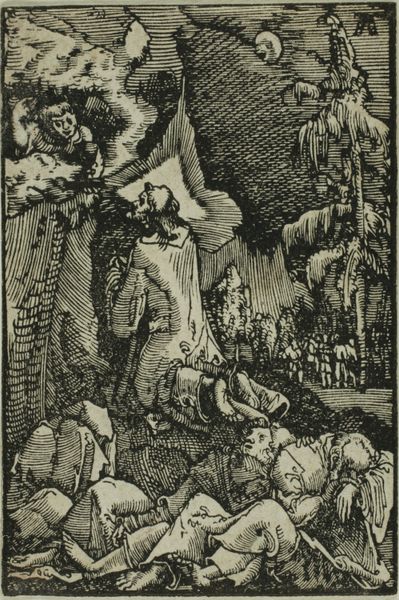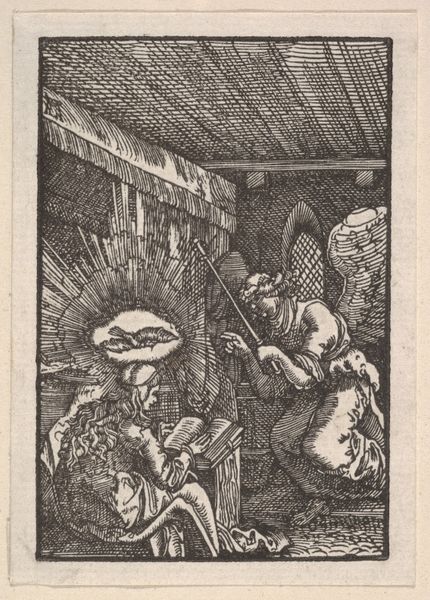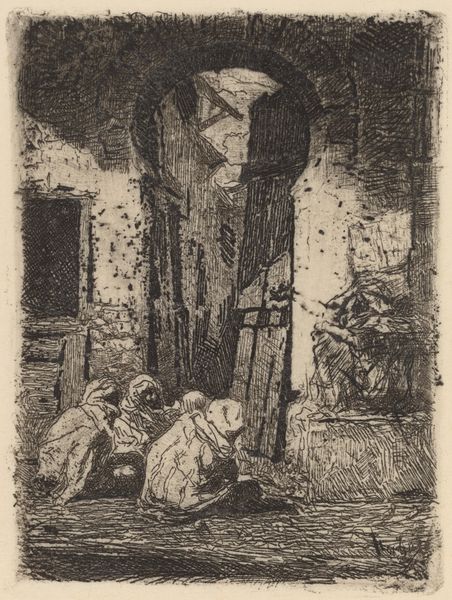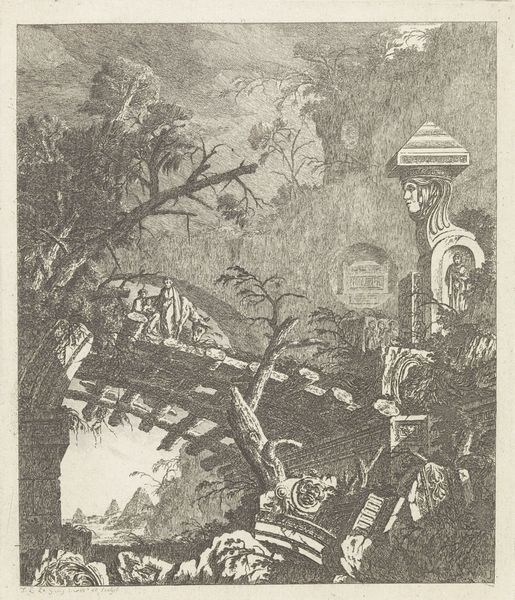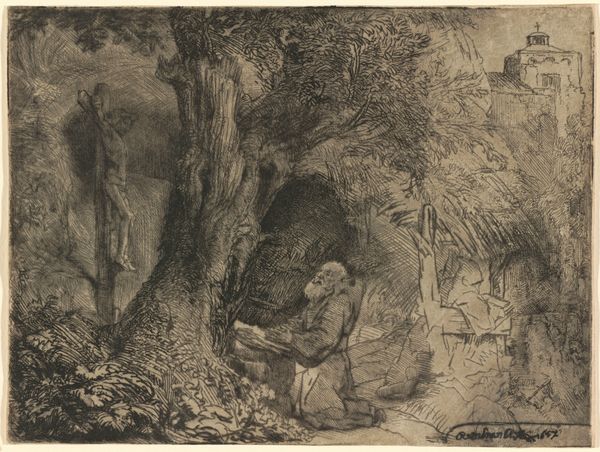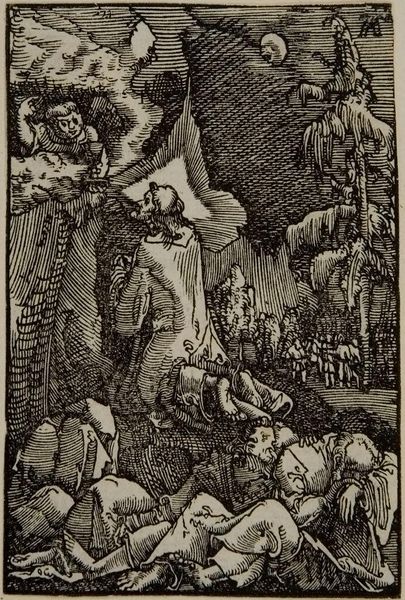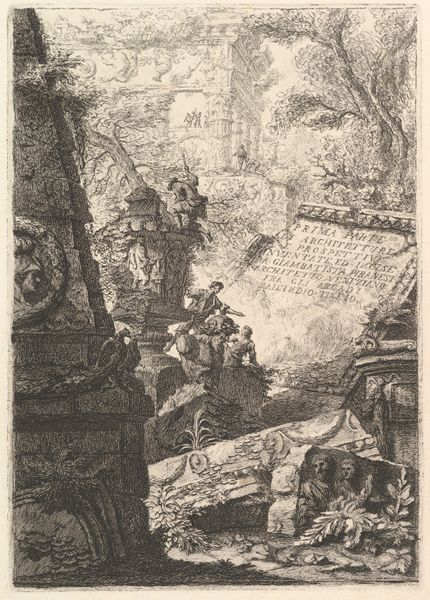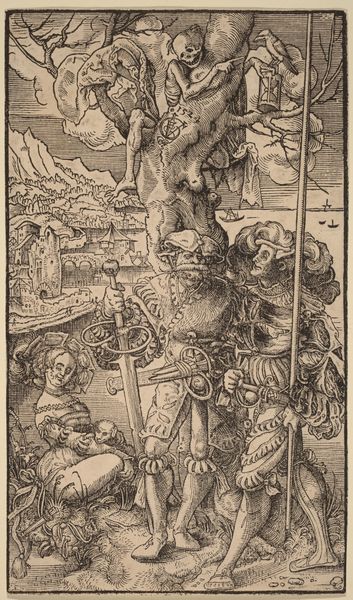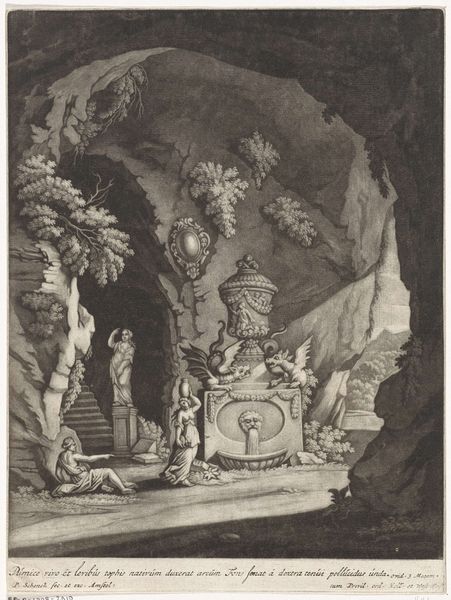
print, woodcut, engraving
# print
#
woodcut
#
pen work
#
history-painting
#
northern-renaissance
#
engraving
Dimensions: 6 5/8 x 4 3/4 in. (16.83 x 12.07 cm) (image)
Copyright: Public Domain
Curator: Albrecht Altdorfer’s woodcut engraving, "Saint Jerome in a Cave," likely created sometime between 1480 and 1538, draws us into an intensely personal and deeply textured space. Editor: Immediately, I’m struck by the stark contrast of light and shadow, and how that shapes the feeling of confinement within this craggy grotto. It feels both intimate and overwhelmingly vast. Curator: Absolutely. Altdorfer masterfully uses the woodcut medium. Consider the labor-intensive process, where lines are carved away to leave only the image to be printed. Think about the physical act, almost a devotion of mark-making in its own right. How does that relate to the solitary asceticism represented in Saint Jerome's life? Editor: It echoes it perfectly. And look at how symbols intertwine—the lion, traditionally Jerome's companion, isn't just an animal, it is testament to the saint's miraculous abilities to heal. The cave itself isn’t just shelter; it symbolizes both physical and spiritual retreat, a crucible for transformation. Curator: Note the careful layering. This isn’t just about depicting the textures of stone or fur. The density of the marks also shapes emotional resonance. I'd say that's precisely how the northern renaissance utilized labor so intricately, allowing material and symbolic density to commingle. Editor: I agree. The grotto appears not just as a refuge, but almost a character in its own right, mirroring Jerome’s own internal landscape. What appears natural and untouched clearly has signs of craft from the structure he built. A lot to contemplate for someone so immersed in nature. Curator: So many fascinating tensions are held in the crafting and representation of the image! The tools that have made it also allow for more intimate, contemplative relationships to occur between the saint and viewer, mediated by devotional iconography. Editor: Exactly. Looking closely reveals such dedication to the making and the meanings of Altdorfer's prints. Curator: Indeed, something to savor, this connection to devotional experience mediated through printmaking techniques. Editor: Agreed. It will stick with me as an important part of Northern Renaissance art.
Comments
minneapolisinstituteofart almost 2 years ago
⋮
In the late 1400s, Saint Jerome grew to have yet another symbol-a dead tree stump. In Albrecht Dürer's woodcut (P.231), it rests in the left foreground; in Albrecht Altdorfer's, the stump anchors the base of Jerome's crucifix. In these contexts, the stump represents the wood of the Cross, and its proximity to the saint implies mortal transience and spiritual salvation through Christ's sacrifice.
Join the conversation
Join millions of artists and users on Artera today and experience the ultimate creative platform.

